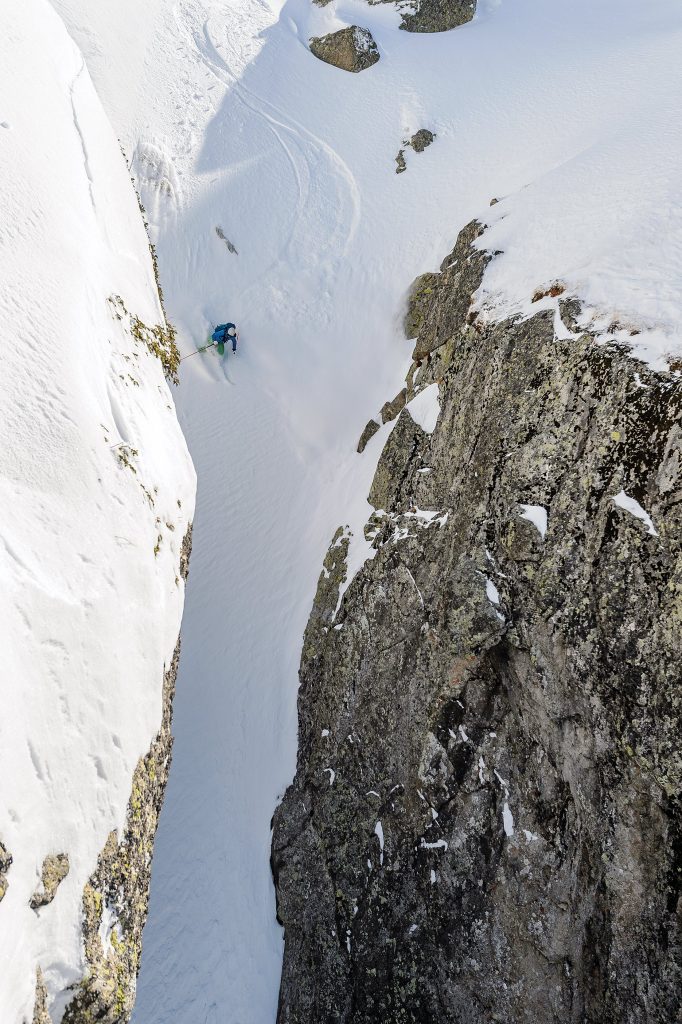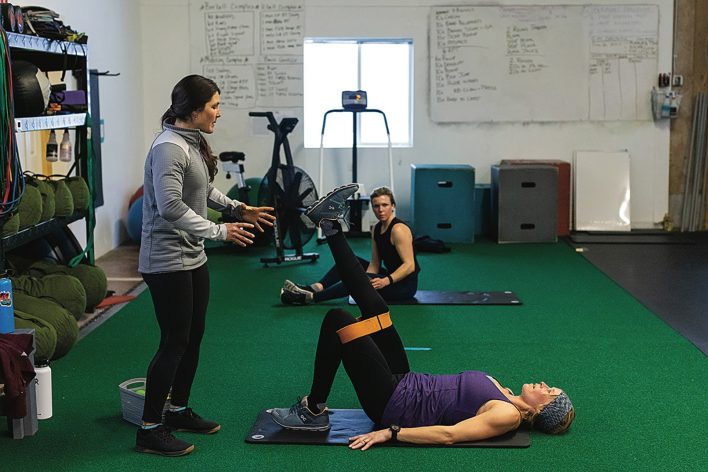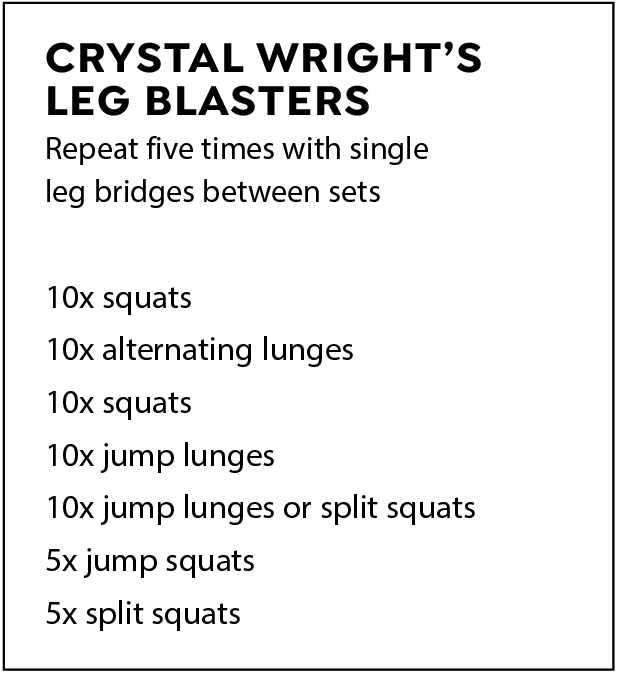In 2012, Crystal Wright was riding high after winning her second Freeride World Tour title. That is, until she broke her leg in a mountain biking crash. With a goal of getting her ski career back on track, Wright hit the gym. At that point, she says, “I realized that having people help me heal and the gym helped me get through the injury mentally and physically and come back strong.” Just a few months and another broken leg later, Wright started her own gym, Wright Training, in Jackson, Wyoming, where she has since shepherded hundreds of skiers through their own fitness journeys.

Crystal Wright puts her holistic training to good use in Catalonia’s Pyrenees. Fredrik Marmsater
Feedback Loops
Most of us seek out doctors and lawyers when we need medical or legal aid. When the consequence of incorrectly working out is serious injury, finding a certified coach seems like a no-brainer. Wright holds several training credentials, including a Personal Trainer Certification from the National Academy of Sports Medicine and a degree in health promotion. When she trains, however, she still relies on other professionals to watch her form. “We all need coaches, right? Somebody who’s watching us,” she says.
Wright notes that during Covid-related shutdowns a lot of folks built home gyms and started training alone. “I think it’s super important to have eyes on you,” she reiterates. “There’s so much that goes into the programming, not just doing random exercises to get ready for skiing. A lot of injuries can be like, ‘Oh, I got injured doing ski fit.’ Well, probably because you didn’t have anybody watching you and your form was off.”
Finding the right coach isn’t as simple as walking into a gym and signing up for a class, especially if you’re looking for sport-specific training. “Any kind of strength training is going to help people,” Wright says, but finding a coach who partakes in your sport is going to give a better result. As a skier and mountain biker, Wright knows firsthand what skiers and bikers need in their exercise routines. Therefore, she can specialize in training those athletes. On the flip side, Wright says she wouldn’t run CrossFit classes since she’s not a CrossFit athlete.
While hiring a personal trainer is the best way to go, it’s the most expensive. For those looking to dial in their workouts on a budget, most gyms offer group classes or Wright recommends doing a few assessments with a coach to build a plan.
Class Commitments
Ski fit classes are a hot ticket in mountain towns, with many residents partaking every year. On top of being a financially savvy way to train, they give you a squad that motivates you and makes training fun, just like a high school soccer team. After all, having someone to high-five at the end of a workout is icing on the cake. “I’ve had people tell me, ‘I’ve met some of my best friends here, and it’s so great. We all go hang out and ski on the weekends,’” Wright says. These friend groups motivate each other to return to ski fit year after year, and having a gym buddy as a ski partner is helpful when it comes to training for specific backcountry goals.
In the fall, Wright runs an eight-week progression class, which she has dialed in over a decade and a half of training. When trying to decide what ski fit class to sign up for, Wright has one clear piece of advice: Look for a coach who is a skier.
Ups and Downs
Wright offers two ski fit classes: one for freeride athletes and one for ski mountaineers. “For freeride, it’s more eccentric,” she explains. Eccentric exercises focus on strength, stability and slow-twitch muscles, making them ideal for those looking to stomp cliffs, bang out bumps or generally smash their way downhill on skis. The activities Wright suggests are “leg blasters, core, posterior chain, a little bit more plyometrics.”

“I lift things up and put them down,” Wright Training coach Devin Delaney says as she leads an early morning ski fit class. Sofia Jaramillo
For those more focused on skinning, the impacts are different: More overuse injuries come with hiking, especially when wearing a heavy pack, and lung capacity and endurance are the keys to success. Wright prescribes cardio with slightly more upper body and core. While there is a strength training element, it’s not the main course.
The reality is that neither freeride nor touring exist in a vacuum. “The programming model we use is always total body,” she says. Some days are upper body days, some are leg days, and others might focus on high intensity interval training (HIIT) and endurance. What changes is the balance of each piece. “If you have strength and stamina, you’re going to be able to go day in and day out in the mountains and not get injured,” Wright says.
Offseason Blues
The two months before ski season are a great time to start doing ski-specific workouts, but what about the rest of the offseason? While staying in shape through the summer is easier than starting from scratch each year, that doesn’t mean focusing on skiing year-round. Complementary activities like biking, trail running and hiking are fun ways to maintain fitness over the offseason, especially when paired with gym time. “My big thing is two days of strength training, so two hours a week, through the summer. You just have to maintain your base,” Wright explains. This helps prevent injuries when it’s time to jump into sport-specific training prior to ski season.

Step Back and Relax
The final piece to the ski training puzzle is giving your body time to heal. No one wants to sacrifice their ski season by getting hurt in the gym, and training hard every day puts you at a higher risk of injury. Wright reminds people to factor outdoor activities into their training plans. “Sometimes people come in super tired because they ran a marathon the day before,” she says. “People need to be responsible for themselves and what else they’re doing outside of the gym and communicate that with their coach.”
Rest day doesn’t mean sitting on the couch watching TV. Taking a short hike, a mellow bike ride or even just walking can increase blood flow, which in turn decreases recovery time. On recovery gym days, Wright suggests focusing on mobility and stretching rather than lifting weights or HIIT.
“A lot of it is just being humble, understanding the well-rounded training and how important that is,” she concludes.
This article was originally published in Issue No. 153, The Isolation Issue. To read more, pick up a copy, or subscribe to read stories like these as soon as they are published in print.










Related posts: